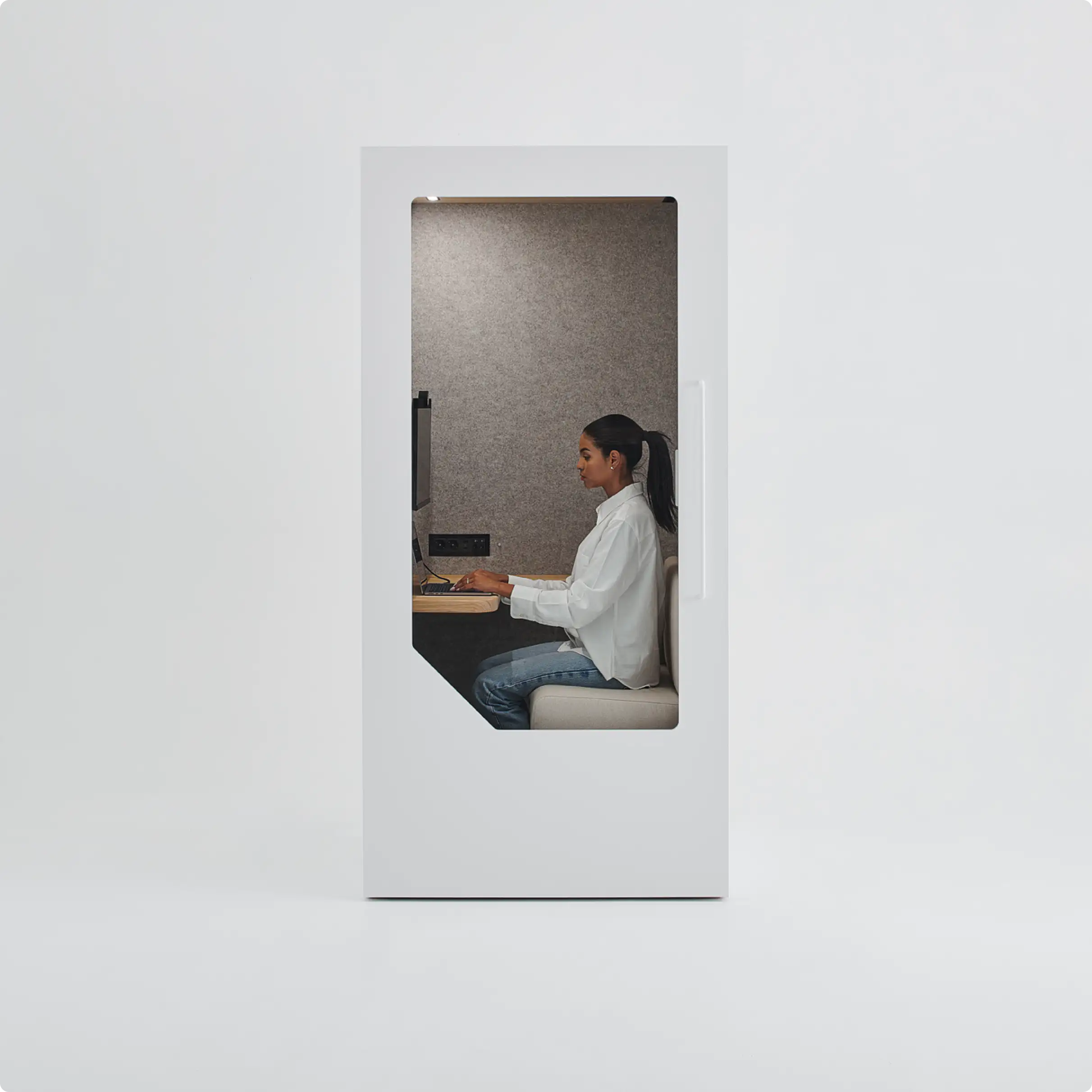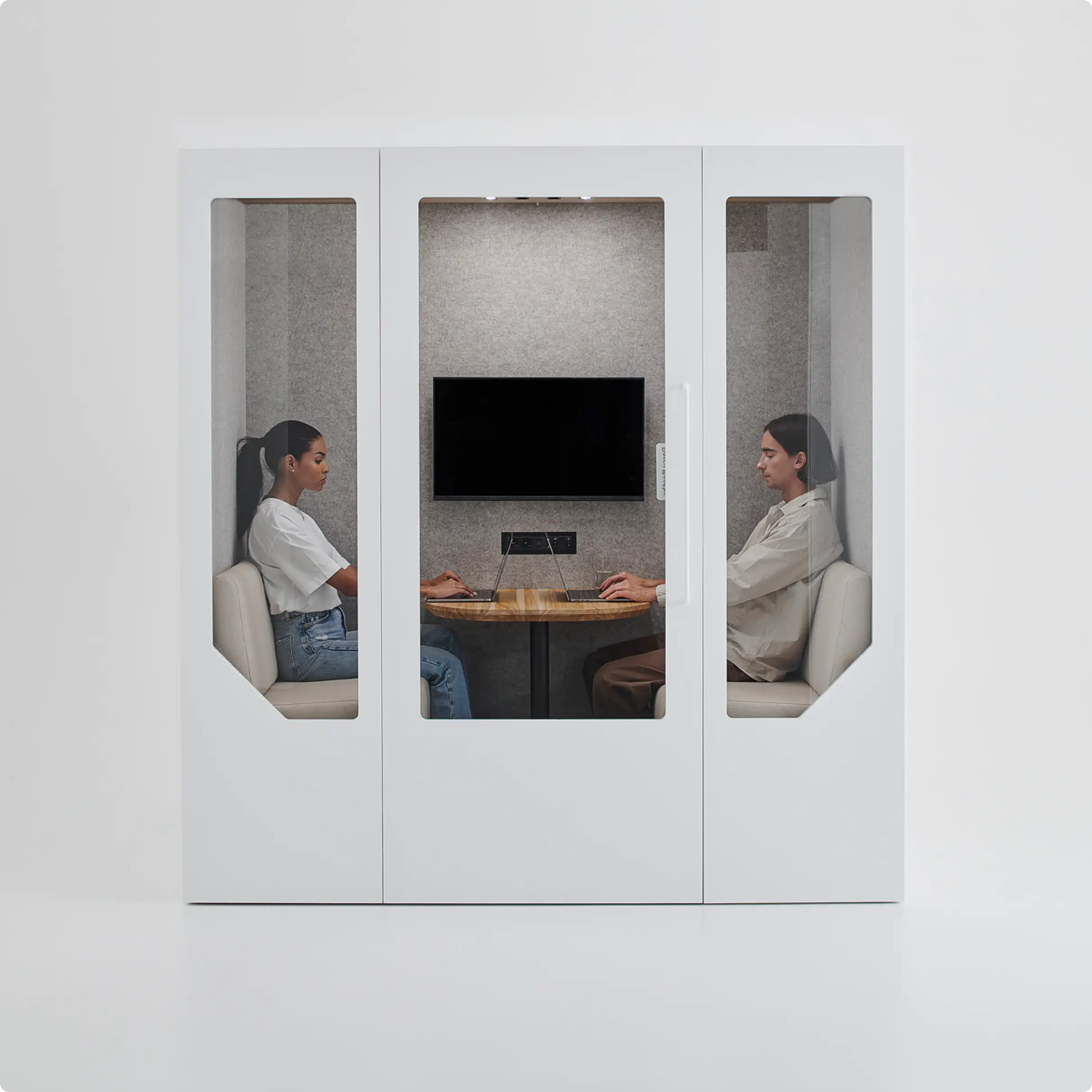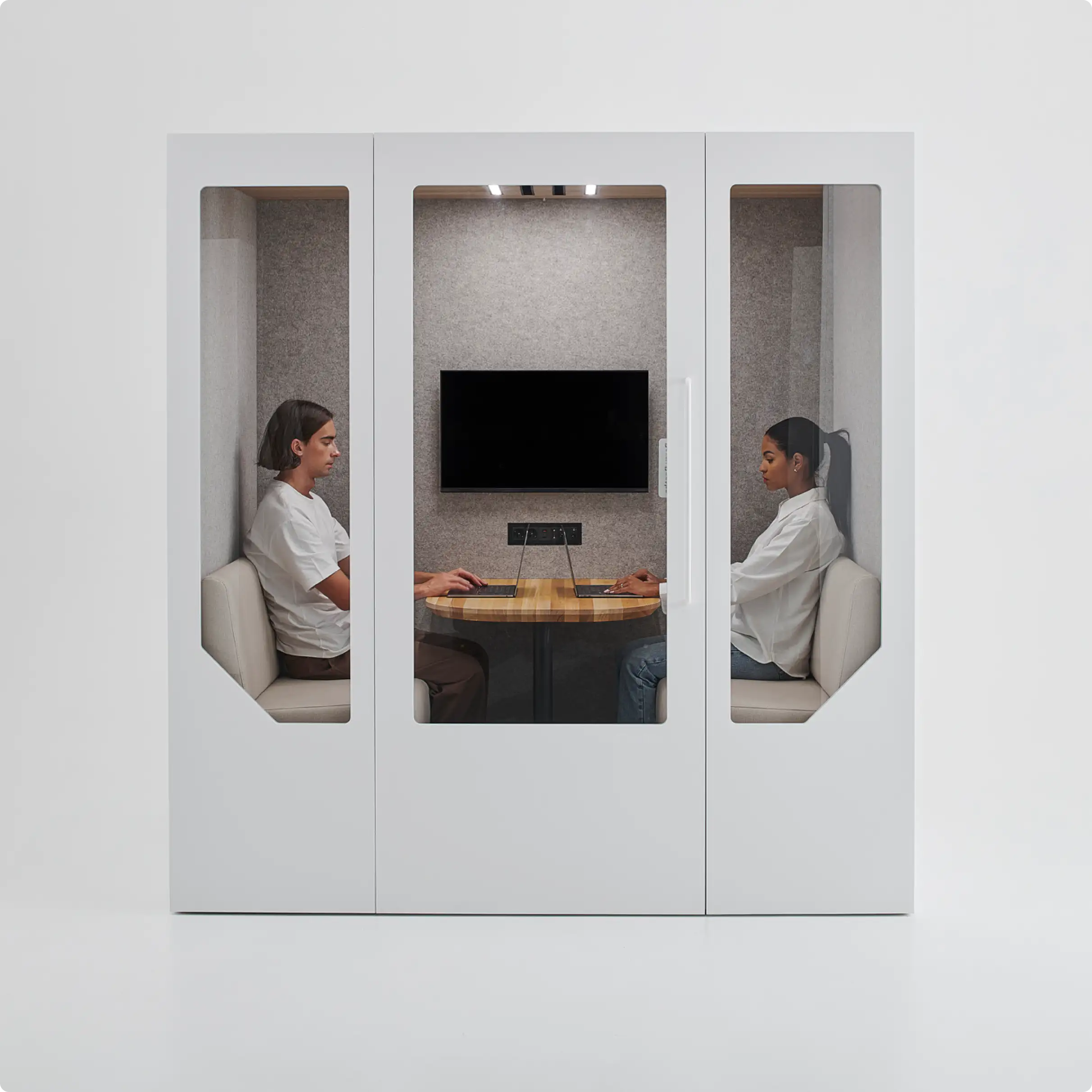Modern offices promise collaboration, creativity, and flexibility — yet too often they deliver something very different: poor working conditions. Behind the stylish décor and open layouts lies a daily reality of distractions, stress, and flagging employee productivity. It’s not just an inconvenience; it’s a health and safety concern, a mental health issue, and a threat to overall employee satisfaction.
While noise, temperature, lighting and cleanliness may seem like background details, together they define the true quality of a working environment. Addressing them isn’t just about comfort — it’s about workplace health, legal responsibility, and showing that employers take their duty of care seriously.
Key Takeaways
- Poorly designed offices create poor working conditions that hurt mental health and employee wellbeing.
- While there are many factors that contribute to poor working conditions, the Health and Safety Executive (UK) states that noise and stress are among the most common causes of work-related stress and absenteeism.
- This has led to an increase in popularity of soundproof booths and the recognition that good acoustic design is an employee benefit, not a luxury
- Small changes like better lighting, air quality, and flexible space can also drastically increase productivity.

Examples of Poor Working Conditions
Poor working conditions can be defined as those that negatively affect employee health, comfort, or performance. These can arise from noise, poor workplace hygiene, bad lighting, rigid schedules, or outdated tools. Below are some of the most common causes of discomfort in today’s offices — and why addressing them is crucial to employee wellbeing and business success.
Poor Lighting and Visibility in Workspaces
It’s surprising how often lighting gets overlooked. Bad lighting — whether too dim or glaringly bright — leads to eye strain, headaches, and fatigue. Studies show it can cut employee productivity by up to 20%, as workers lose focus or develop work-related stress from squinting at screens.
Good lighting design creates balance: natural light, well-placed lamps, and anti-glare monitors. And when solo focus is essential, adaptable environments like office pods provide controlled light and calm for high-concentration work.
Outdated Technology and Equipment
Technology defines how smoothly a job runs. Old computers, poor connectivity, or slow systems are more than irritations — they’re silent productivity killers. Employees waste valuable working hours waiting for files to load or printers to function, which leads to frustration and declining employee satisfaction. Employers who invest in efficient tools not only improve employee wellbeing, but also strengthen job security, showing they care about long-term success.
Poor Workplace Hygiene and Cleanliness
Nothing damages morale faster than poor workplace hygiene. Dusty air vents, unclean desks, and shared spaces that never seem fresh contribute to respiratory health issues and increased risk of illness. The safety executive reminds businesses that workplace conditions directly affect employee health and absenteeism. Clean offices boost well being and demonstrate respect for employees, supporting a positive company culture built on care and responsibility.
Excessive Noise and Distractions
Open-plan offices were meant to encourage collaboration, but constant background chatter, phone calls, and clattering keyboards can turn them into stress factories. Chronic noise has been proven to harm mental health, elevate blood pressure, and lower employee productivity. In a recent European study, 60% of workers said they were unable to concentrate or produced lower-quality paid work due to excess noise; only 8% described their office as quiet.
That’s why acoustic design has become a core health and safety issue. Booths need to be properly soundproof. The best manufacturers can demonstrate how their booths can deal with noise from everything from loud talkers to chainsaws. We’re not kidding – check out the videos here.
A well-made privacy booth helps people choose when not to collaborate, which ironically boosts collaboration overall. It allows focused solo work — freeing up time and mental energy for creative teamwork later. That’s what healthy employment relationships look like in action.
Uncomfortable Temperature and Poor Ventilation
Temperature and air quality play a crucial role in comfort. Too cold and employees feel sluggish; too hot and concentration evaporates. The Health and Safety Executive recommends maintaining stable temperatures and adequate ventilation to reduce safety hazards like fatigue and dehydration. Simple fixes — window blinds, quiet fans, or air purifiers — can transform daily comfort without breaking budgets. Smart employers who listen and adapt signal that they’re supporting employees, not just managing them.
Lack of Employee Flexibility and Work-Life Balance
Rigid schedules and constant overtime don’t guarantee results; they burn people out. Modern employment should include flexible working arrangements, rest periods, and healthy work life balance policies. Allowing autonomy over working hours helps reduce mental health strain and turnover. It’s also one of the most valued employee benefits, right up there with fair pay or annual leave. When employees trust that management respects their work life balance, they perform better and stay longer.
Poor Workplace Culture and Recognition
Even when the physical workplace looks fine, negative company culture can quietly poison morale. When hard work goes unnoticed or unfairness thrives, employees feel disposable. Poor employee benefits create poor working relationships and more serious problems like disengagement or burnout. Building a positive working conditions culture means regular feedback, appreciation, and clear training opportunities. Fair treatment drives loyalty — and that’s worth more than any ping-pong table.

Importance of Positive Working Conditions
Good working conditions are a foundation for employee wellbeing and trust. Organisations that promote workplace health enjoy higher retention and fewer safety issues. The connection between environment and performance is direct: when employees feel physically comfortable and emotionally supported, they contribute ideas, maintain healthy competition, and collaborate more effectively.
Improving workplace safety and comfort also strengthens job security, making employers more appealing to the best talent. It’s not only about compliance with safety laws — it’s about creating a space where workers can work safely, thrive, and innovate.
Solutions to Improve Poor Working Conditions
The good news? You can improve working conditions without massive expense. Thoughtful choices in layout, noise control, and flexible spaces yield long-term results. Here are practical steps every business can take:
- Assess and address acoustic problems. Treat health and safety as a wellness issue. Introduce soundproof pods for focused tasks and private, undisturbed meetings.
- Prioritise lighting and air. Natural light and proper ventilation improve employee health and reduce fatigue.
- Encourage flexibility. Respect rest periods and family commitments like parental leave to promote mental well being.
- Keep it clean. Regular hygiene checks prevent increased risk of illness and show respect for employees.
- Be transparent. Share policies on safety standards, employment relationships, and fair training opportunities.
- Offer genuine support. Introduce counselling services, mentorship, or informal check-ins to help manage work-related stress.
In short, improving poor working conditions means understanding the people behind the desks. It’s not about spending more; it’s about investing wisely — balancing function with cost, just like the Persy approach: practical, honest, and designed around your real needs.

Conclusion
Addressing these working conditions isn’t just a legal or health and safety obligation; it’s a strategic advantage. When companies treat well being as part of their employee benefits, they nurture loyalty and performance. Acoustic comfort, clean spaces, and healthy work life balance are not extras — they’re essentials that define modern, responsible employers.
Businesses that get this balance right are rewarded with higher employee productivity, stronger teams, and happier workplaces. And the most successful ones understand: you don’t need to overspend to do it. You just need the right partners — the kind who give you straightforward advice, quick delivery, and no unnecessary extras.
That’s what supporting employees really looks like.







.webp)
.avif)